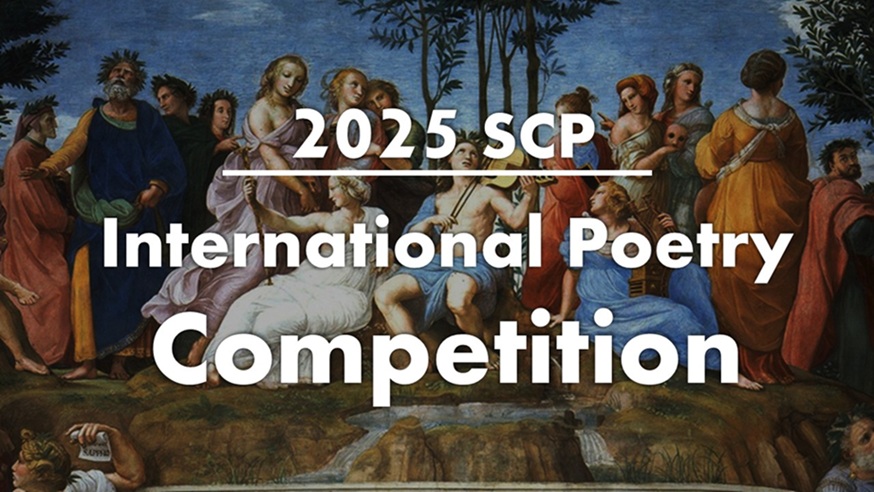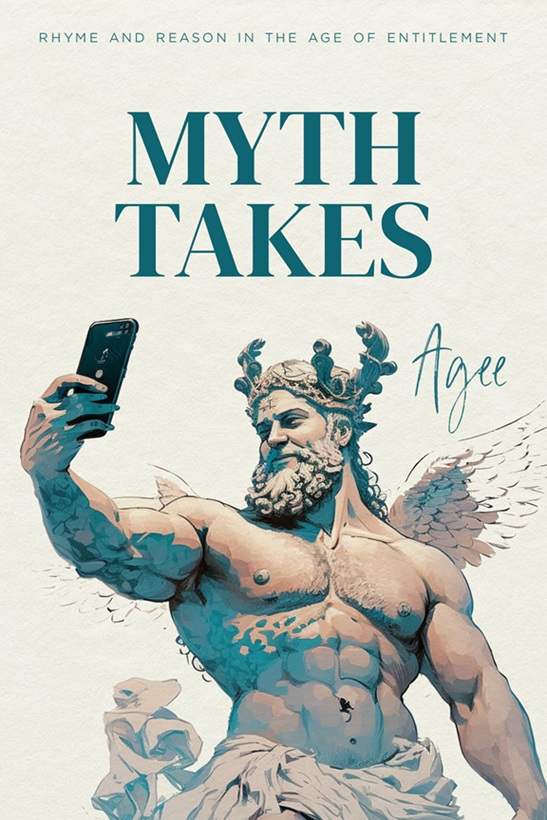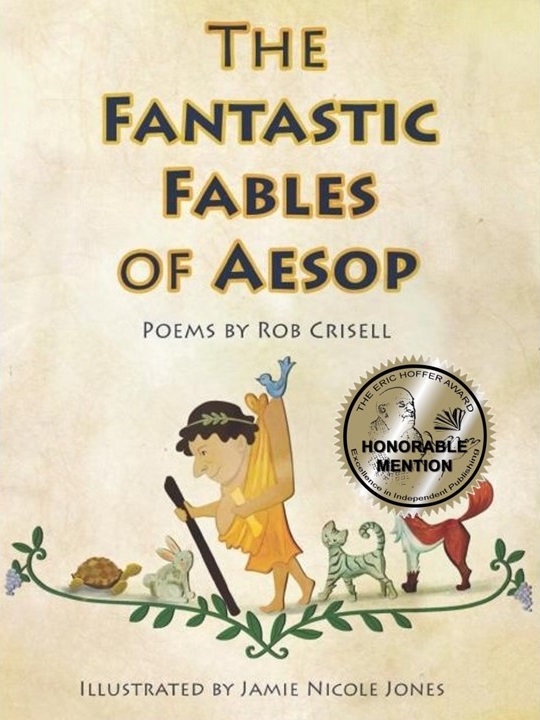By Dusty Grein
Dating to the thirteenth century, the terza rima (Italian for “third rhyme”) is a classic form of writing poetry in three-line stanzas called tercets, which are interlinked by their rhyming pattern. They use the ending sound from each tercet’s middle line, as the first and third of the next, creating the pattern (aba, bcb, cdc, ded, and so on). There is no limit to the number of tercet stanzas that can be used.
The terza rima is often credited to the Italian poet Dante Alighieri (1265-1321). He was the first to use the form to create a popular recorded epic, The Divine Comedy, but it was probably based on tercet poems and songs performed by the Provencal troubadours of his day.
Geoffrey Chaucer introduced the terza rima to England with his poem “Complaints to his Lady,” but it was truly popularized by Thomas Wyatt through both translations and original works. It became a favorite style for many of the English romantic poets of the 19th century.
Meter
Originally, terza rimas were written in eleven syllable lines (hendecasyllable), however any meter can be used as long as it is consistent throughout. Most written in English, are done using iambic lines, with either pentameter or tetrameter being the most common.
Some classical poets have taken liberties and split the stanzas into mixed sets or combined them all into one long non-stanzaic work, but the rhyme scheme is retained. Here is the opening excerpt from one of Lord Byron’s terza rimas:
Francesca of Rimini
“The Land where I was born sits by the Seas
Upon that shore to which the Po descends,
With all his followers, in search of peace.
Love, which the gentle heart soon apprehends,
Seized him for the fair person which was ta’en
From me, and me even yet the mode offends.
Love, who to none beloved to love again
Remits, seized me with wish to please, so strong,
That, as thou see’st, yet, yet it doth remain.
…
George Gordon (Lord) Byron, 1820
Subforms
Many poets have used terza rima architecture to create small and complete forms unto themselves. The two most popular of these are probably the terza rima sonnet, and the terzenelle.
The poet Percy Shelley wrote his “Ode to the West Wind” as a set of five cantos, and each was a fourteen line open sonnet (aba, bcb, cdc, ded, ee), consisting of four linked tercets and a couplet. One of the most well-known closed sonnets (A,b,a bcb, cdc, dad, aA) written using tercets is from the twentieth-century poet Robert Frost:
Acquainted with the Night
I have been one acquainted with the night.
I have walked out in rain—and back in rain.
I have outwalked the furthest city light.
I have looked down the saddest city lane.
I have passed by the watchman on his beat
And dropped my eyes, unwilling to explain.
I have stood still and stopped the sound of feet
When far away an interrupted cry
Came over houses from another street,
But not to call me back or say good-bye;
And further still at an unearthly height,
One luminary clock against the sky
Proclaimed the time was neither wrong nor right
I have been one acquainted with the night.
Robert Frost, 1928
Modern classical poets have combined the terza rima with the villanelle to create a new form known as a terzenelle. This nineteen line poetry form uses five interwoven terza rima tercets and a quatrain, using the first and third lines as the final two, as in a villanelle (see How to Write a Villanelle). Here is an example of the terzanelle:
Loud Today
The voices in my head are loud today,
I plug my ears, but still I hear them talk
Oh please, oh please just make them go away!
I thought that maybe I could take a walk
That they would quiet down and let me think
I plug my ears, but still I hear them talk
I’m trying not to let my spirit sink,
These voices drowning out my fervent plea
That they would quiet down and let me think
I hear them use my mouth. That wasn’t me!
Oh please help me ignore their foul demands
These voices drowning out my fervent plea
I hang my head, then fiercely wring my hands
As they tell me to do such evil things
Oh please help me ignore their foul demands
Pure misery their constant echoes bring,
As they tell me to do such evil things
The voices in my head are loud today,
Oh please, oh please just make them go away!
Dusty Grein, 2015
Writing Your Own
Whether you prefer the open-ended structure first used by Dante, the closed sonnet preferred by Frost, or the newer terzanelle, the crafting of a terza rima poem is not difficult. I will show you step-by-step, my own method for crafting a closed terza rima sonnet.
Some poets prefer to fly by the seat of the pants, but I tend to build a skeleton to hang my poems on first, then fill in and adjust as necessary.
The first step, as always, is to choose your subject matter. I often find my inspiration in images, so knowing I wanted to dig deep into an emotion, I found an image of a man walking away into the fog on a wooded path, and it screamed “grief” to me. Whatever method you use to find the message you wish to convey poetically, you must decide how to proceed, but I suggest you let your feelings lead the way.
Next you must decide on your meter. Most English sonnets, standard or terza rima, are written using iambic pentameter, but in tribute to the original form, I am going to use a hendecasyllable meter, specifically amphibrachic tetrameter catalectic (see Classical Poetry Basics).
Now is the most difficult part of the process for me, and that is choosing the first line. This will also be the last line for a closed poem, so it must be able to be used to open and close the work. This is where your poetic talent, skill and experience come into play.
After some thought, my opening (and closing) line will be:
In solitude I roamed a mist shrouded path.
Now I choose my rhyming words, by finding sets of words that bring to my mind an emotional response or possibility to create one. I need four sets of three words, and each must end with a strong stressed syllable. My first set is my A rhyme, which I know must rhyme with “path.” Here then are the words I chose to use:
A – wrath, bath, hath
B – sound, bound, found
C – gray, pray, away
D – gloom, bloom, doom
Now I can use the basic fourteen line framework to insert these rhymes into tercets, with my first and last line in place.(Note: in the following frame, -is a soft, unstressed syllable and = is a hard, stressed one):
(A1) In solitude I roamed a mist shrouded path
(b) – = – | – = – | – = – | – sound
(a) – = – | – = – | – = – | – wrath
(b) – = – | – = – | – = – | – bound
(c) – = – | – = – | – = – | – gray
(b) – = – | – = – | – = – | – found
(c) – = – | – = – | – = – | – pray
(d) – = – | – = – | – = – | – gloom
(c) – = – | – = – | – = – | away
(d) – = – | – = – | – = – | – bloom
(a) – = – | – = – | – = – | – bath
(d) – = – | – = – | – = – | – doom
(d) – = – | – = – | – = – | – hath
(A1) in solitude I roamed a mist shrouded path.
At this point you must use your tools to sculpt your creation into life, using whatever meter you have chosen. In this case it is the one-TWO-three, one-TWO-three cadence of the amphibrach. If you find as you work that a particular word doesn’t work, you simply replace it with one that does. Here then is my finalized poem:
A Mist Shrouded Path
In solitude I roamed a mist shrouded path
Where icy fog soon devoured every sound
A victim of all my fears and heaven’s wrath.
In my heart this sharp pain was carefully bound,
My feet carried me deeper into the gray
As if some enlightenment there could be found.
Near a spectral tree I stopped, kneeling to pray;
as answer there came to me naught but deep gloom.
In anger, I’d cast my faith blindly away.
After losing them before new life could bloom,
Grief flooded my soul with its poisonous bath.
The silent fog now verified my life’s doom.
Avoiding the pain that my poor heart now hath,
In solitude I roamed a mist shrouded path.
Dusty Grein, 2016
I quite like the result, and may just use this poem in my own Collected Works.
If you try it, you may just find that you enjoy crafting poetry in terza rima style as well.
Dusty Grein is an author, poet and graphics designer from Federal Way, Washington. He currently lives in the Pacific Northwest, where his 15 year old daughter is hard at work securing her college degree while still in high school, and raising him right. When he is not busy writing, he donates a great deal of his time and graphics talent. In honor of his grandson Eddy, lost to SIDS at 13 weeks old, he creates free memorial images for bereaved families, with a special focus on infant and pregnancy loss. His blog, From Grandpa’s Heart… is followed by fans around the world.















Few years ago I composed a poem in Terza Rama. That’s all…I didn’t attempt later. But a very beautiful form, with a kind of sliding rhymes. Here’s is mine:
HomePoemsPoetsMember AreaQuotationsPoetry E-Books
Share this poem: Share on Facebook Share on Twitter Share on Google+ Sathya Narayana
Gold Star – 4,517 Points Sathya Narayana (12-06-1958 / Nellore, Andhra Pradesh)
Poet’s PagePoemsQuotesCommentsStatsE-BooksBiographyVideosSend MessageShare on FacebookShare on Twitter
Poems by Sathya Narayana : 321 / 405 « prev. poem next poem »
Serendipity (Terza Rima)
I had some land in the city’s suburbs
beside a pond with ferns, fishes and ducks
amidst a beautiful jungle of shrubs!
I sold it for pittance and spent the bucks.
Really, it was no deal willy-nilly.
Happy we were at that, as dough of luck.
The site is now city’s central alley
with shopping malls and sky scrapers around
its worth in crores, mocking at my folly.
“Before you sold, should have had thoughts second! ”
My friend once grieved, “A fool you are my pal.
You failed to make an option wise and sound! ”
“You’re right my friend”, I laughed, “It was my fall.
I should have saved that piece of land or some
to spend on doctors’ bills, drug stores, et al! ”
Surprised he asked, “You look alright! Buxom!
Never saw you gulping syrups and pills
and consulting medics in your life time! ”
“I made a choice that well suited my bill! ”
I drawled, “Between a sail by the wind falls
and life serene; the body in fine fettle! “
Thank you very much, Dusty. The part about meter will especially help my next one. It was a very helpful article that is much appreciated and will refer to it often!
Dusty, thank you for writing these instructions for poetic forms. I have always just written intuitively, and it’s nice to learn what the classical forms are. Your instructions are easy to follow. I think I actually wrote a terza rima several years ago and just didn’t know it. Only 8 syllables per line, but it’s close anyway:
Evolution
I once was like a gentle rain;
I drifted through and left no mark.
I did my best to cause no pain.
I once was like a morning lark;
My song revered the light of day.
I paid no homage to the dark.
I once was like a child at play;
I met the world with laughing ease.
I had no callous words to say.
I once was like a summer breeze,
As harmless as the morning dew.
But now I am like angry seas,
I am a tempest swirling through,
An icy wave that carves the shore.
I am a sky of granite hue.
I am not who I was before;
I claw my way against the grain.
I am not gentle any more.
My hardened scales permit no pain,
My driven pace no easy mark.
Like needles blown across the plain,
I have become a bitter rain.
This is a beautiful, well-crafted poem. Wonderful.
This is a very helpful, edifying essay and encouraged me to tackle a terza rima, myself, and post it on my blog. (I had not attempted one, previously.) As I’ve done a number of sonnets, I decided to go with a terza rima sonnet. I thought that the terza rima form (and the requirement to repeat – or dovetail with – the first line at the end) lent itself, well, to a poem in which an attainment, a feeling, or what-have-you is stated in the first line and the process/aspects in which that is achieved or unfolds occupies the body of the poem.
I begin with the opening line:
‘here are the words I gathered, where I passed’
I then, go on to describe:
the paths I walked on
the elements I walked in
the landforms I walked beside
how the words came to me
and how the words fell from me to the page
these stanzas all begin:
‘I gathered words’
The second last line sets up the segway to repeat the first line at the end – that couplet reads:
‘my final say – when I have breathed my last:
here are the words I gathered, where I passed’
I had a lot of fun with this form. Thanks, so much, for your terza rima “share”, Dusty.
stop being a gamer girl